ReservationSearch and reserve rooms
Click here to confirm, change or cancel your reservation
Shinkansen accommodation plan
提携法人専用予約

Resol Gallery Ueno
At "Resol Gallery Ueno" located in the living lobby, up-and-coming artists will be exhibiting a variety of artworks that embody their passion and skills.
The artistic experience that is unique to Ueno, a city of academia, will provide travelers with a spice that is different from a simple hotel stay.
In addition to the permanent exhibition, the gallery also has a special exhibition section that is held every other month, providing an opportunity for new discoveries and growth every time you visit.
Permanent Exhibition
Here we introduce the art on permanent display.
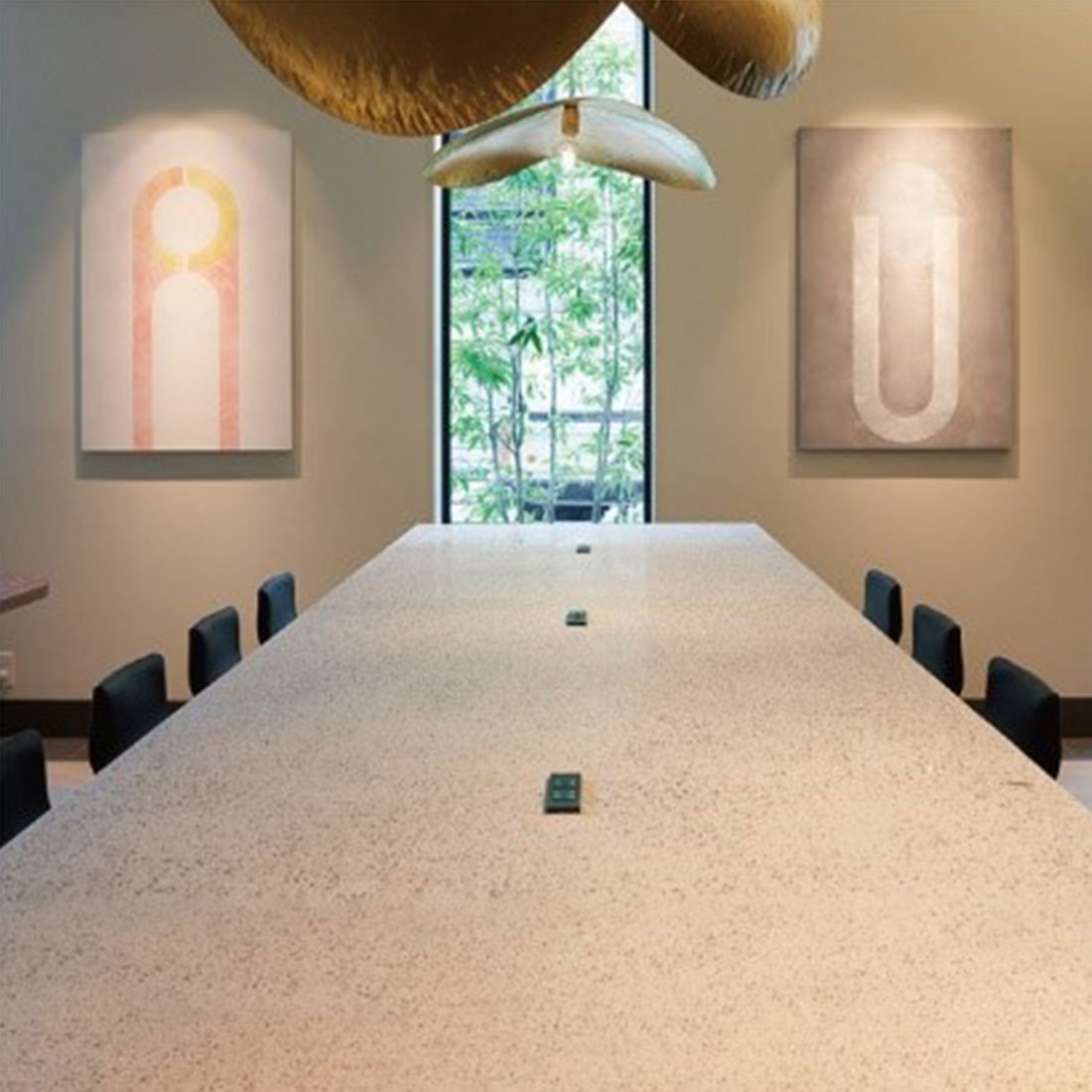
The Sun and the Moon (2020, Keita Shimizu, acrylic paint on wooden panel, set of 2)
On the large pedestrian bridge in front of Ueno Station, there are two large objects themed on the sun and the moon. Each is installed in a different place on the bridge, and the "moon" object in particular is not well known, but both are works by the late Shoji Yokokawa, an environmental designer and one of my university teachers. Through the appearance of a sculpture that expresses the difference between yin and yang in an abstract form, it encourages travelers visiting the Ueno area to make small discoveries. With respect to Professor Yokokawa...
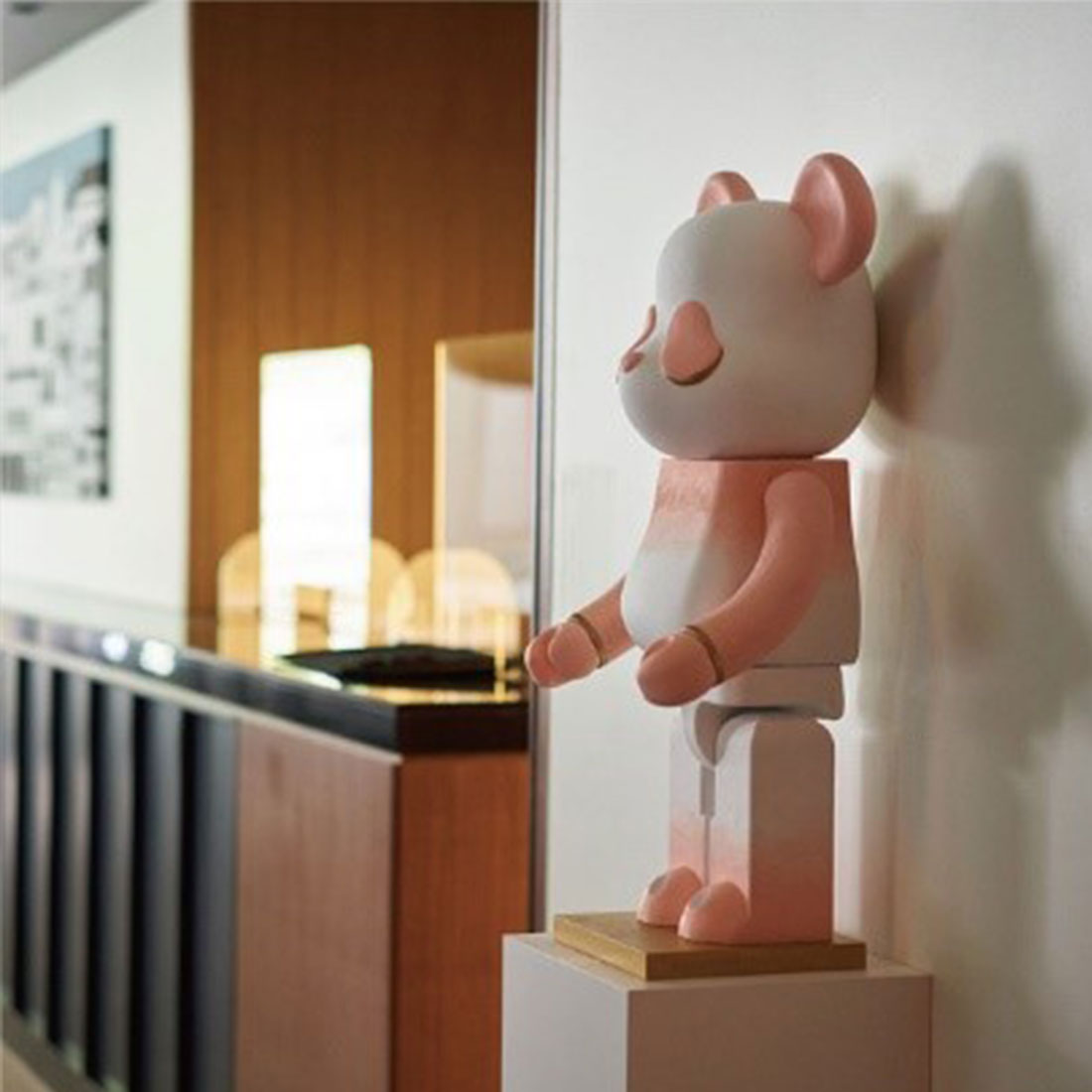
Panda (2020 Masaru Ishikawa and Keita Shimizu, acrylic paint on resin figure)
Based on the Japanese block-type figure BE@BRICK, the symbol of Ueno, the panda has been dyed in cherry blossom pink.
Baby pandas who have their fur licked by their mother turn pink, so the cherry blossom pink panda is a sign of love. The object, which has been painted over and over again with time and love, will grow up together with Risol Ueno, loved by many customers.

EDO, rotated 90° (2020 Keita Shimizu, printed on canvas)
If you invert the colors of an old map from the end of the Edo period and rotate it 90 degrees, it looks like a satellite photo of Tokyo at night. Where is Resol Ueno?
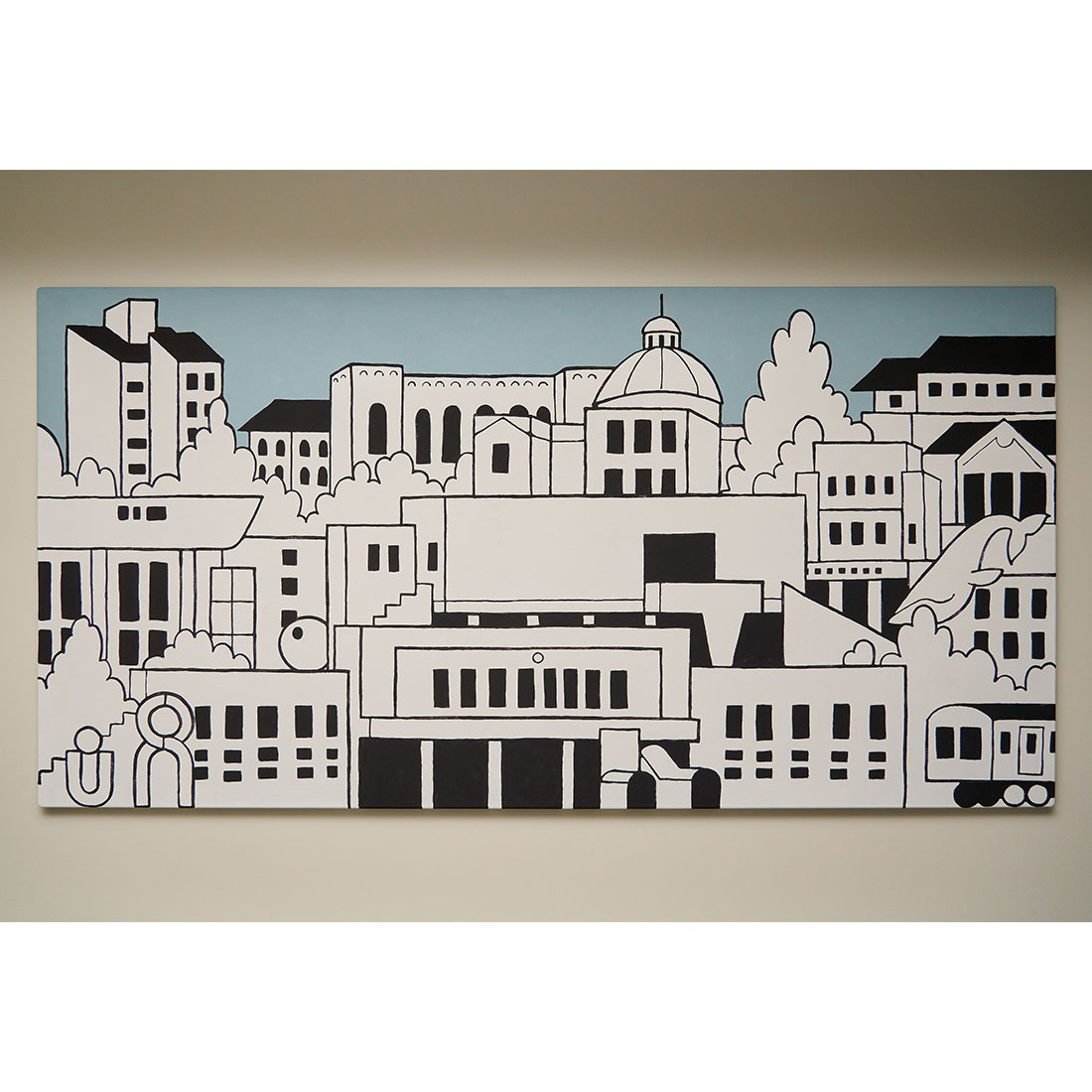
Ueno (2020 Keita Shimizu, acrylic paint on wooden panel)
There was a painting in a foreign land, depicting a historic town crowded with many buildings with simple black lines. Ueno is also lined with many unique buildings, but what would happen if I depicted the coexistence of these buildings in a simple way, not in a descriptive way, but with a boyish feeling? I took up my brush with a very simple thought, without thinking too deeply.
Profile
Keita Shimizu
Designer, design consultant
Born in Tokyo in 1974.
After graduating from the Master's program at the Graduate School of Fine Arts, Tokyo University of the Arts, he began working as a designer based in Milan.
His inclusive designs, born from the global values he developed during his childhood in the United States and his life as a designer in Italy, have been highly praised both in Japan and overseas. Recently, he has not only been involved in product design, but also in hotel concept development and corporate design.
Special Exhibition
Here are this month's special exhibits.
Exhibition period: October 1st to October 31st, 2025
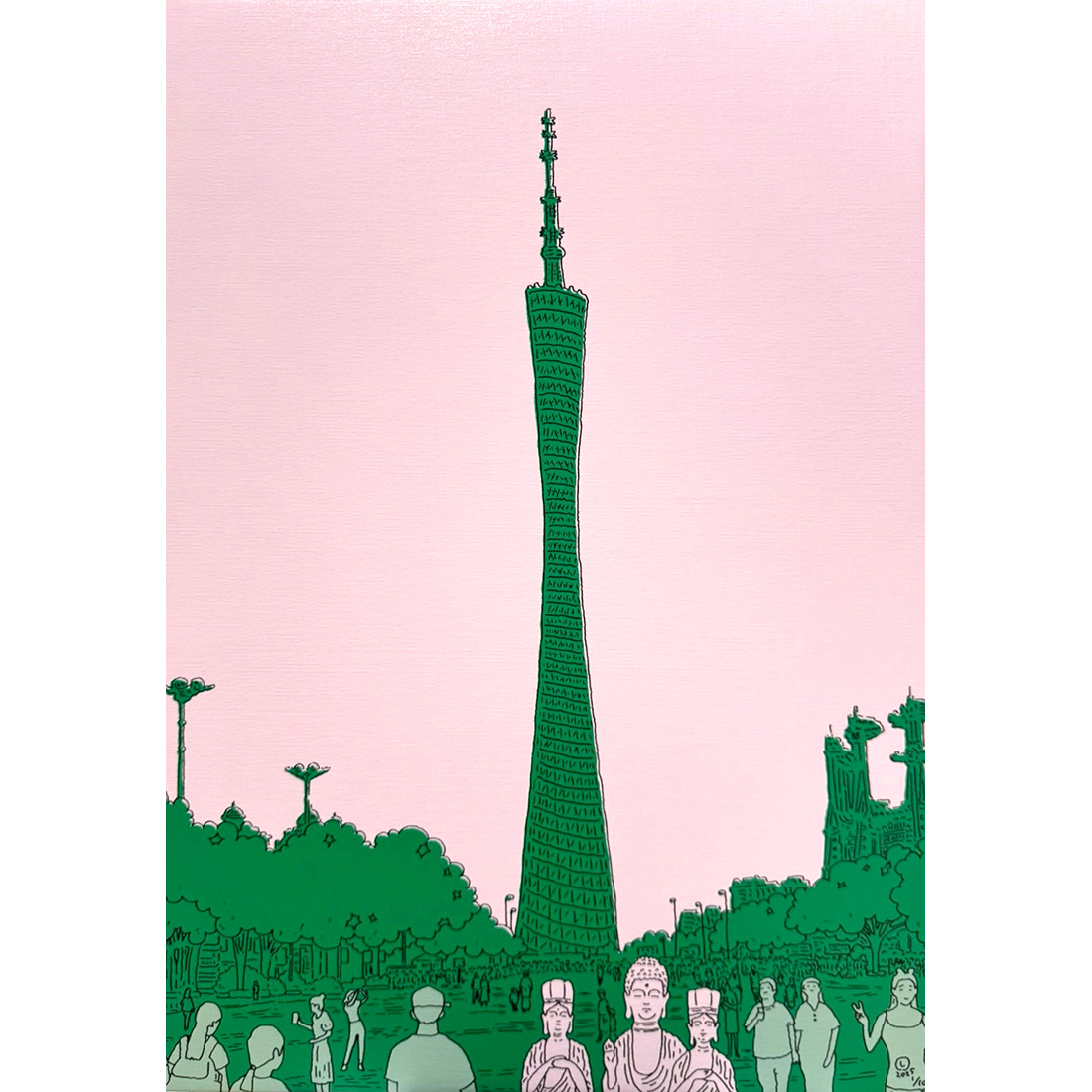
"Tower of Travel 01 (Guangzhou, China)" (2025, pen, ink, color printer, A2)
In the early summer of 2025, I traveled to Guangzhou.
I was told that Guangzhou Tower was a 40-minute walk from where I was staying, but I made some detours and it ended up taking me three hours.
It was a very hot day and my phone shut down due to the heat, which made for an exciting trip.
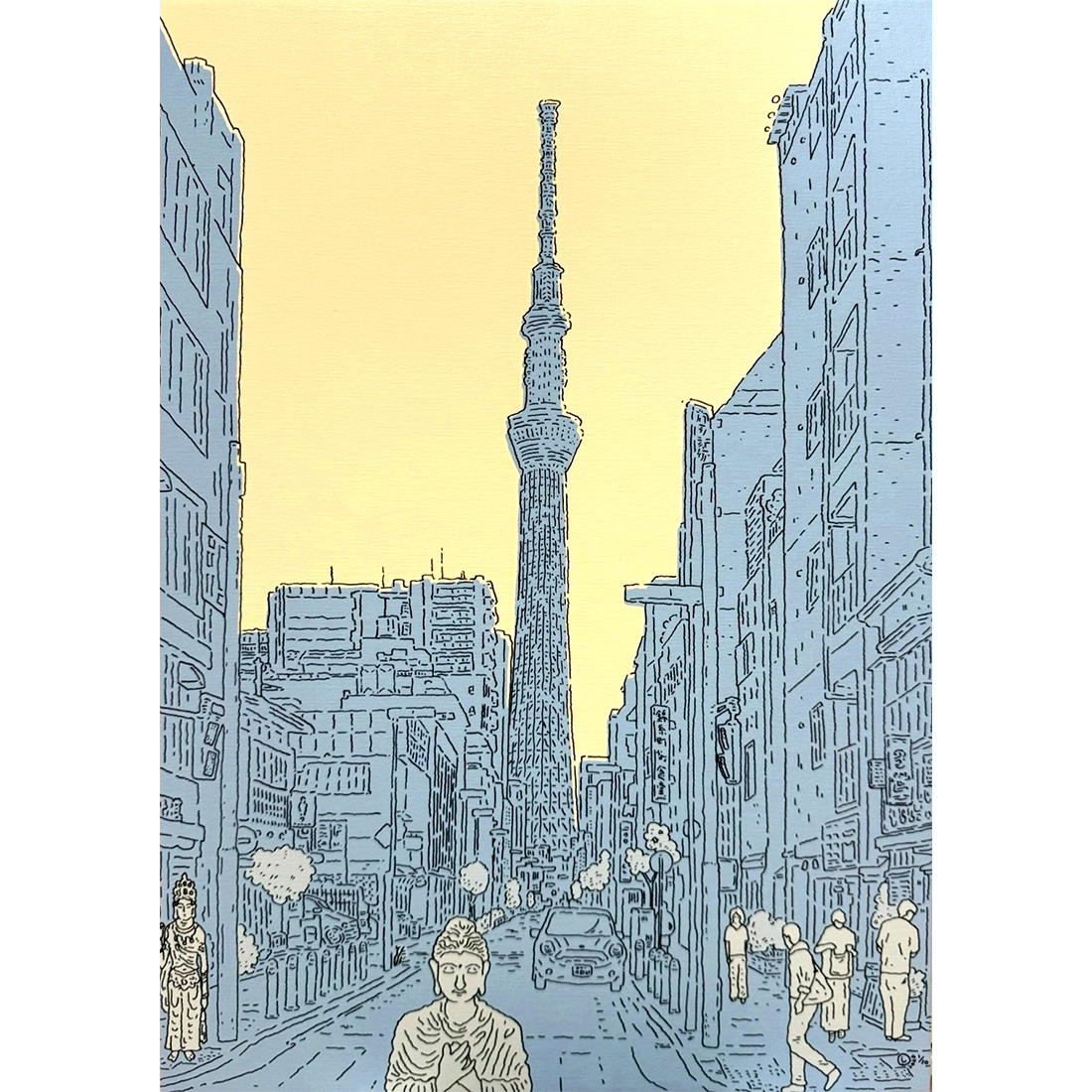
"Tower of Travel 02 (Tokyo, Japan)" (2025, pen, ink, color printer, A2)
I went to Canton Tower on Monday.
On Sunday of the same week, I visited the area near the Skytree.
These two are currently the world's number one and second largest radio towers.
My former teacher once wrote in his book that "number four is better than number one or number two."
The current fourth is the Moscow TV Tower, which is definitely worth a visit.
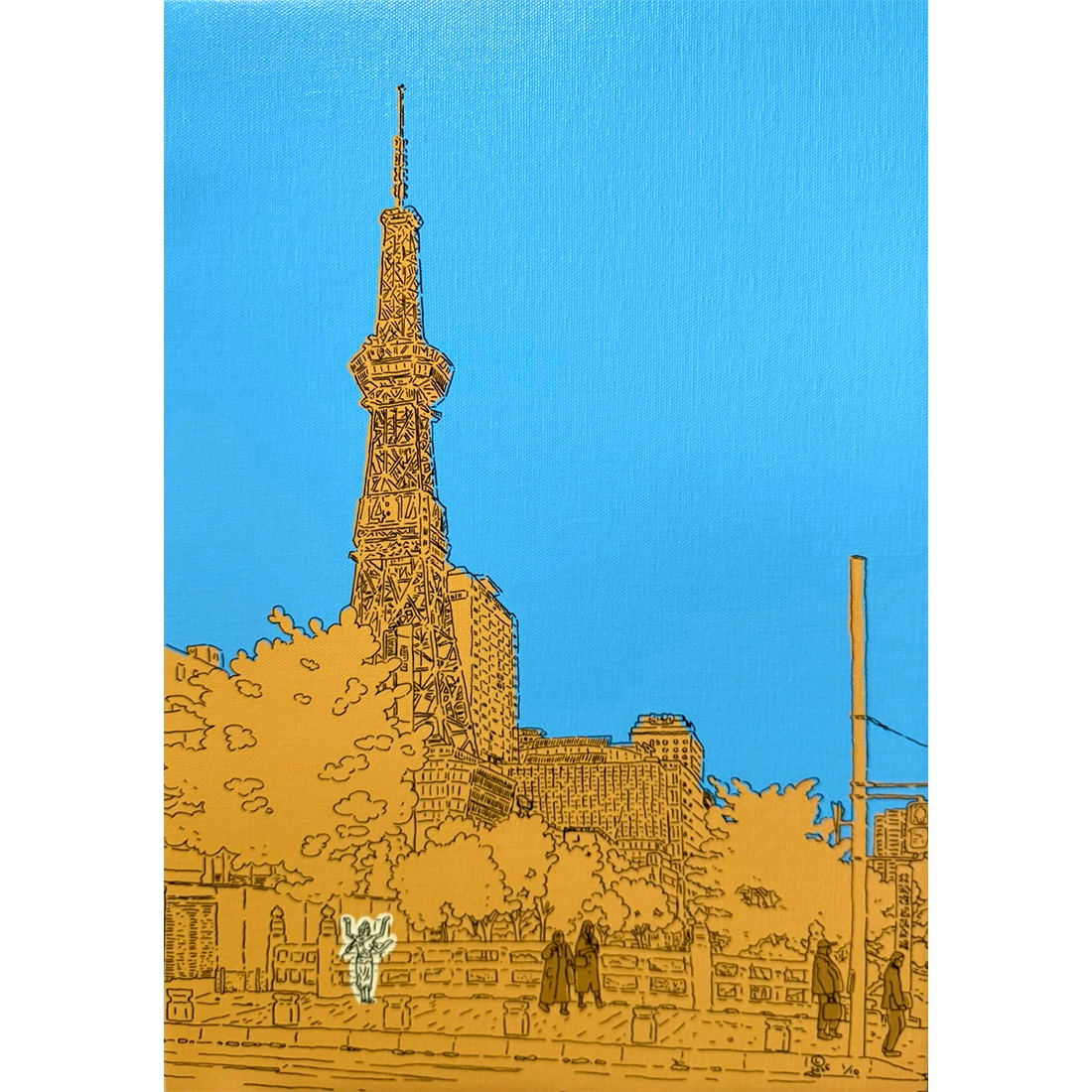
"Tower of Travel 03 (Sapporo, Japan)" (2025, pen, ink, color printer, A3)
My husband is from Hokkaido.
In 2021, my husband took me to Sapporo, Hokkaido for the first time.
Sapporo's tower has the simple name "Sapporo TV Tower."
I like simple names like this tower and Tokyo Tower.
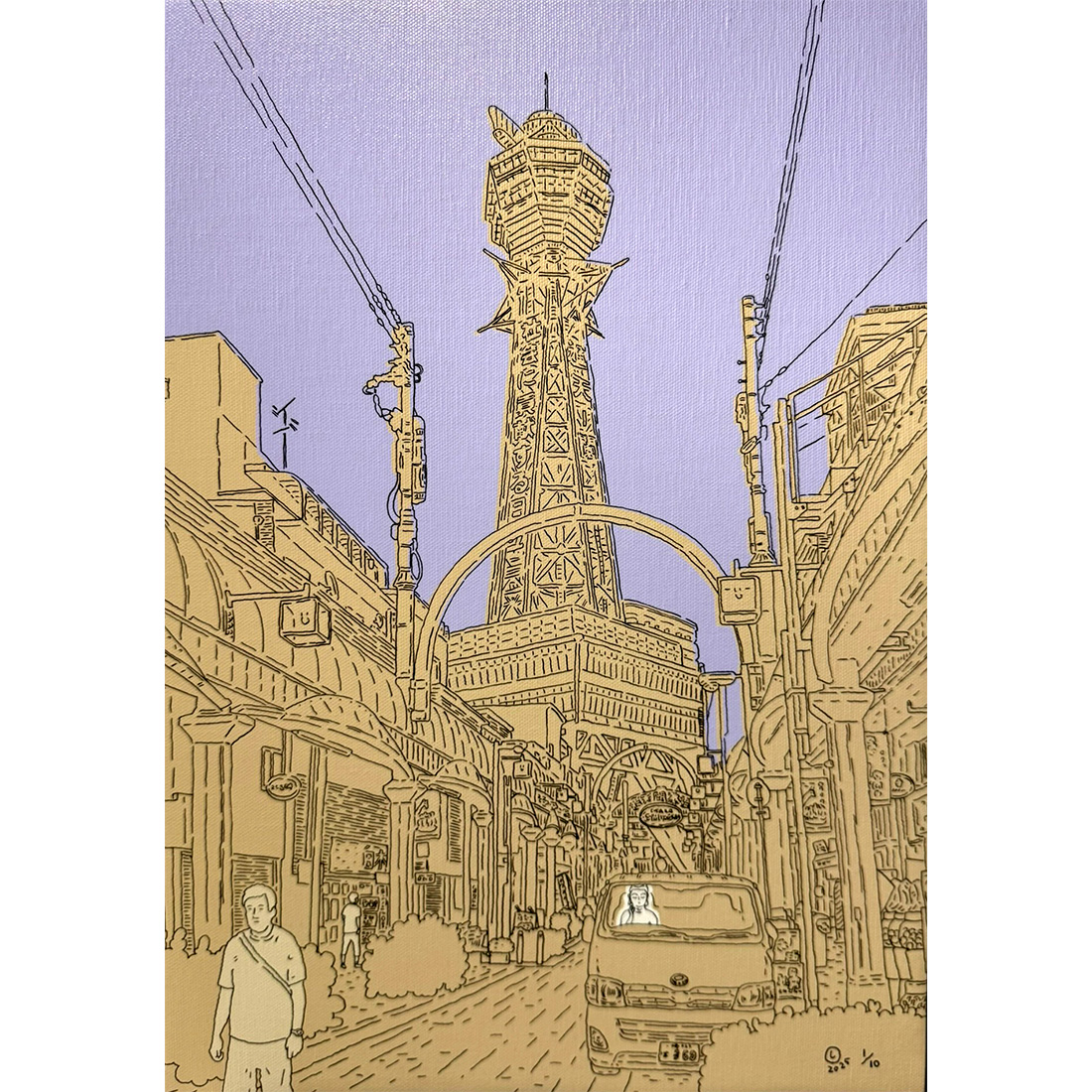
"Tower of Travel 04 (Osaka, Japan)" (2025, pen, ink, color printer, A3)
2020 was the year I met my husband.
My husband's birthday was to be celebrated while he was on a business trip to Osaka.
My husband wanted to spend our first birthday together, so I took time off work and went to Osaka.
Tsutenkaku Tower stood tall in Osaka, where there were few people due to the coronavirus pandemic.
Profile
Born in Kofu City, Yamanashi Prefecture. Illustrator. Entertainer. Tea ceremony enthusiast. Doting husband.
Graduated from the Department of Design, College of Art, Nihon University. Studied under Professor Mizumaru Anzai while still a student.
Completed the 25th Palette Club. Won the 3rd National Poetry Boxing Championship.
Released the reading CD "My Mother Complained" (SONY MUSIC).
*I call my wife "master" as a counter to the fact that throughout the long history of mankind, wives have called (or been made to call) their husbands "master."
<comment>
I am fortunate to have the opportunity to hold a solo exhibition at HOTEL RESOL UENO.
thank you.
Due to a certain incident, I started attending a tea ceremony class this spring. Recently, I have been reading books on the tea ceremony every day and thinking about tea and Zen.
In a book on the tea ceremony, I read that "everyone is a Buddha. They can become Buddhas," and I tried to reflect this in my paintings. Bodhisattvas and Asuras are not Buddhas, but I drew them because I believe that they reside in the human heart just like Buddhas.
<Solo Exhibition>
Couple's Trip (Aoyama OPA gallery 2024)
<Group Exhibition>
- 2023
- Small Paintings (Kichijoji GALLERY IRO 2023)
see some scene (Kichijoji GALLERY IRO 2023)
Rakukaki 4 Panels (Aoyama OPA gallery 2023)
Happy Greetings for everyone #5 (Komazawa MOUNT TOKYO 2023) - 2024
- The 3rd Sanyodo Bookstore New Year's Card Exhibition 2024 (Aoyama Sanyodo 2024)
Small Paintings (Kichijoji GALLERY IRO 2024)
City and People (Kita-Aoyama DAZZLE 2024) - 2025
- The 4th Sanyodo Bookstore New Year's Card Exhibition 2025 (Aoyama Sanyodo 2025)
Treasured Collection Exhibition (Aoyama OPA gallery 2025)
Ask the Flowers vol.21 Daphne (Aoyama OPA gallery 2025)
ZINE BY ZINE (Aoyama OPA gallery 2025)
Magazine illustrations
Croissant (Magazine House), Yama to Keikoku (Yama to Keikokusha), Kenchiku Chishiki (Exknowledge), SPA! (Fusosha), O-penasing (Medica Publishing), and others
Book illustrations
Teach Me, Mr. Shiina Prime (by Shintaro Shiina and Noriko Ishibe, published by the Yamanashi Nichinichi Shimbun)
If the death of a celebrity shakes your heart (by Asumi Takahashi and Hitomi Oi, published by Taishukan Shoten)
A little good story about garbage collectors and garbage from all over Japan (by Shuichi Takizawa, Shufunotomosha)
Garbage Cleaning Entertainers Have Seen It! A Realistic and Fun Garbage Encyclopedia (by Shuichi Takizawa, Yamato Shobo)
Japan - Tokyo 50 Surprising Geography-History (by Tadamasa Fukiura, Ohta Publishing)
The definitive edition! The easiest to understand illustrated autonomic nervous system (Kawade Shobo Shinsha), etc.




